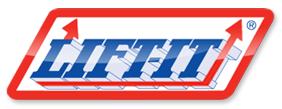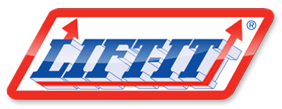The single, most popular question asked at our training is, “What is the recommended D/d for web slings?”
D/d is a well-known consideration for wire rope slings, where “D” represents the Diameter of the object the sling contacts and “d” represents the diameter of the wire rope sling. If a 1 Inch diameter wire rope sling is used in a basket hitch around a 25 Inch Diameter object, a 25/1(D/d) results and the wire rope sling has full basket capacity. Conversely, if the same 1 inch diameter wire rope sling is used on an 8 inch diameter object, resulting in an 8/1 D/d, the wire rope sling loses efficiency and the basket capacity must be reduced by 16%.
The same efficiencies apply to roundslings as there are prescribed usage diameters recommended by the Web Sling and Tie Down Association and many manufacturers, including Lift-It.
The translation of D/d from wire rope slings ends with round slings and does not transfer to web slings. To have a D/d, one would need a “d” and with web slings there is no diameter. If there were a D/d concern with web slings, it would have been realized years ago when some manufacturers were using 3/8” steel plate thicknesses for basket and choker fittings. Currently we use ½” thickness fittings which enable us to justify rated capacities. In this application one would not have a D/d application, but rather a T/t scenario whereby “T” would represent the thickness of the fitting and “t” would represent the thickness of the web.
It is important that fittings used in connection points are adequately strong and spatially correct. Sometimes adequately strong fittings or connection points are not spatially correct and result in far too much sling being crammed into a space that is not correct. This application may result in bunching which reduces sling efficiency and capacity. Consideration must be given to hardware and load connection points. In addition, consideration must also be given to the relationship between collection hardware such as masterlinks or shackles and the individual slings placed in them to form bridle hitches. Again too much “stuff” in an undersized link or shackle can result in loss of assembly strength.
Attached are pictures which illustrate a 75% rule we promote in our Synthetic Rigging Training.
Depicted are 3 shackles with overall widths, 75% of the overall width, which we will refer to as the effective inside width and the corresponding web widths which would be optimal for the three scenarios. If smaller, alloy shackles of adequate strength are used, the webbing edges can become damaged and sling efficiency is lowered due to the bunching and edge loading of the webbing.
Simply stated, webbing edges that ride “high in the saddle” take loading first and disproportionally, while the midsection of the webbing “rides low in the saddle” and is not loaded to the same degree.
Also attached are pictures which depicts a 1-1/2” masterlink which is sufficiently strong for the four legs, but entirely too small. Also depicted is our replacement bridle which features a 2 inch masterlink.
The 2 inch masterlink has an overall width of 8 inches. Applying the 75% rule, 6 inches would be the effective inside width and is adequate for the four sling eyes, each measuring 1-1/2 inches in width.
Unfortunately when you deal with others, you may need to educate them on proper spatial relationships. You will need to do this to ensure the receipt and use of the best possible sling assembly.
You deserve the best!
Michael Gelskey Sr.
Spatial Relationships
Bunching Reduces Sling Efficiency
10 lbs. of stuff in a 7 Lbs. bag?
Fierce!
2” Masterlink
1-1/2” Eye Width
Protection at Bearing
Ugly!
1-1/2” Masterlink
2” Eye Width
No Protection
The 75% Rule
4.75 Ton
2.00” O.A. Width
2.00 x .75 = 1.5 in
8.5 Ton
2.50” O.A. Width
2.50 x .75 = 1.88 in
9.5 Ton
2.75” O.A. Width 2.75 x .75 = 2.06












